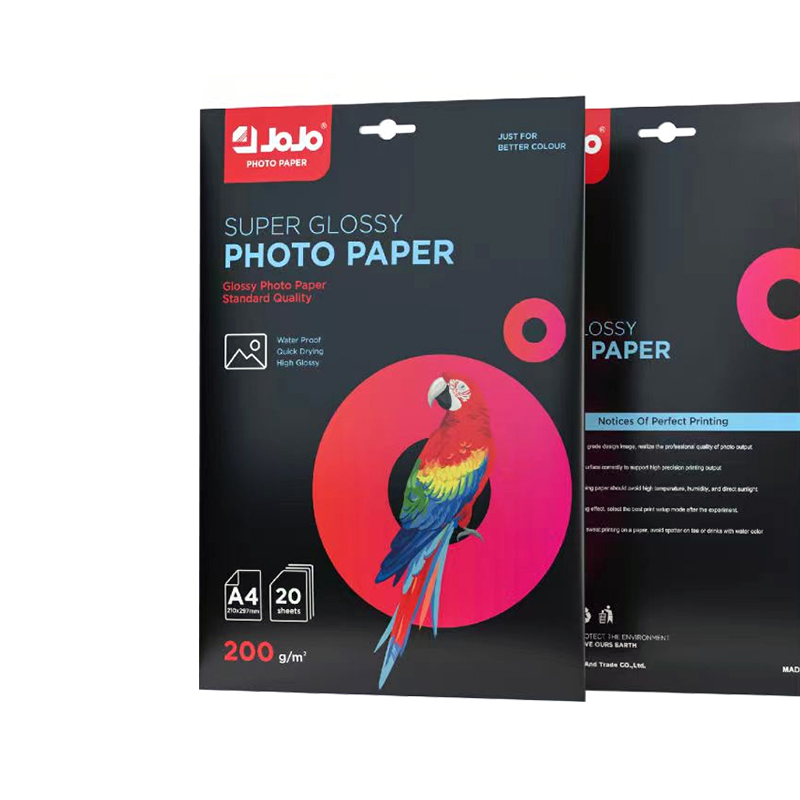If you need any help, please feel free to contact us
Color Gamut In Inkjet Inks For Fine Art Applications
In the world of fine art printing, achieving accurate and vibrant color reproduction is essential. One critical factor influencing print quality is the color gamut of inkjet inks used in conjunction with appropriate photo paper. This article explores how color gamut impacts fine art printing, the role of inkjet inks, and the interaction with photo paper weights such as 150gsm and 180gsm A4 photo paper.

Understanding Color Gamut in Inkjet Printing
Color gamut refers to the range of colors that a particular ink or printing system can reproduce. In fine art applications, a wide color gamut allows for more precise representation of subtle hues, gradients, and tones found in original artwork. Inkjet inks vary in their pigment composition and chemical structure, which directly affects their gamut size and color stability.
A larger color gamut does not always guarantee better prints, but it provides more options to match the original artwork’s colors. For artists and photographers, having inkjet inks capable of rendering a broad spectrum of colors enhances the fidelity of the printed reproduction.
The Role of Photo Paper Weight and Surface
The choice of photo paper significantly affects how colors appear once printed. Photo paper with different weights, such as 150gsm and 180gsm A4 photo paper, offers distinct printing characteristics. Generally, heavier paper like 180gsm tends to be thicker and may provide a richer feel and slightly different ink absorption properties compared to lighter paper such as 150gsm.
In fine art printing, photo paper 150gsm is commonly used for its balance of quality and flexibility. It often features a smooth or matte finish that can enhance the appearance of inks with wide color gamuts. Meanwhile, A4 photo paper 180gsm may be preferred for prints requiring more durability or a more substantial feel, especially in portfolio presentations or gallery prints.
Interaction Between Ink and Paper
The interaction between inkjet inks and the chosen photo paper is fundamental to achieving the desired color gamut. Inks absorb differently depending on the paper's coating and weight. Photo paper 150 gsm, for instance, tends to have a coating that optimizes ink absorption and color vibrancy without excessive bleeding, helping to maintain sharp details in the print.
A4 photo paper 180gsm, being thicker, often includes coatings that enhance color saturation and durability, which can help inks retain their color gamut over time. The coating’s microporous structure allows inks to sit on the surface rather than deeply penetrating the paper fibers, pilot in sharper and more vivid color reproduction.
Inkjet Ink Formulations for Fine Art
Inks formulated for fine art applications generally use pigment-based particles rather than dye-based ones, due to better lightfastness and resistance to fading. The pigment particles in inkjet inks affect the achievable color gamut and how colors blend on photo paper. Pigment inks tend to produce more stable colors, which is particularly important for artworks intended for display or archival purposes.
When combined with photo paper 150gsm or A4 photo paper 180gsm, pigment inks can deliver a print that balances color richness and longevity. The specific formulation and compatibility between the ink and the photo paper are critical to avoid issues such as color shifts or reduced gamut.
Practical Considerations for Fine Art Printing
Fine art printers must consider several factors to make the more of their inkjet inks and photo paper. Calibration and profiling are essential to align the printer’s color output with the desired results. ICC profiles tailored to specific ink and paper combinations, such as photo paper 150gsm or A4 photo paper 180gsm, help maximize the color gamut reproduction.
Additionally, understanding how lighting conditions affect the perception of color gamut is important. Prints viewed under different lighting can reveal variations in color vibrancy. Choosing inks and photo papers with consistent performance across lighting conditions contributes to the overall satisfaction with the print quality.
Color gamut in inkjet inks plays a vital role in fine art printing, influencing how closely prints match original artworks. The selection of photo paper, including options like photo paper 150gsm and A4 photo paper 180gsm, further affects color reproduction and print quality. By carefully considering the interaction between ink formulations and photo paper characteristics, fine art printers can produce prints with detailed color accuracy and pleasing visual impact, suitable for a wide range of artistic applications.

 English
English Español
Español 中文简体
中文简体 Português
Português

